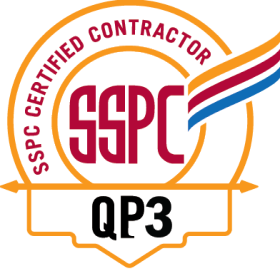Pressure vessels are robust storage containers that hold products under pressures ranging from 15 PSI all the way up to a whopping 3,000 PSI. While vessels can be built to hold higher pressures, the certification requirements for these are increasingly stringent.
Process vessels, heat exchangers, and storage vessels are the most common types of pressure vessels, and they are found in most industrial and commercial environments.
Because these vessels operate at such extreme pressures, a poorly built pressure vessel is a massive workplace hazard. There are strict safety standards in place to ensure they are fabricated correctly.
What Is Pressure Vessel Certification?
.jpg?width=383&height=479&name=pressure%20vessel%20stamps%20(1).jpg)
Various pressure vessel and certification program requirements must be met when fabricating new vessels or making repairs or alterations to existing vessels.
These pressure vessel codes ensure that vessels and boilers are safely built and that future engineers have a solid record of a vessel’s entire history, including fabrication and all the repairs and alterations made to the vessel.
What Are the Different Pressure Vessel Stamps?
There are many pressure vessel code stamps in the USA, but two common ones are the ASME code “U-Stamp” and the NBIC and certification mark “R-Stamp.”
The U-Stamp (ASME Pressure Vessel Code)
The ASME Certification mark for Unfired Pressure Vessels (U-Stamp) comes from Section VIII Divisions 1-3 of the ASME Boiler and Pressure Vessel Code — a set of regulations and safety requirements accepted by over 100 countries.The ASME Certification mark for Unfired Pressure Vessels (U-Stamp) comes from Section VIII Divisions 1-3 of the ASME Boiler and Pressure Vessel Code — a set of regulations and safety requirements accepted by over 100 countries.
- Pressure vessel thickness
- Material
- Design of penetrations and connections
- The way the vessel is joined
- And much more
There are three different U-Stamps, each one related to Divisions 1-3 of the Code.
R-Stamp (NBBI Authorization)
The NBBI Certificate of Authorization (R-Stamp) comes from the National Board of Boiler and Pressure Vessel Inspectors. This stamp governs repairs and alterations.
Both pressure vessels and fire vessels (like boilers) fall under the purview of the R-Stamp.
How To Determine Which Pressure Vessel Certifications Are Required?

Which stamp you use depends on the sort of work you’re doing. If you’re repairing or altering an existing vessel, you must use the R-Stamp.
If you’re fabricating a new pressure vessel or boiler, you’ll use one of the three U-stamps, as these regulate new construction.
- Division 1 U-Stamp. Governs the fabrication of design-by-rule vessels. It is best used for small-scale, standard, specific designs.
- Division 2 U-Stamp. Division 2 regulates the construction of design-by-analysis vessels. It is often used for orders with multiple identical vessels as it allows you to fabricate using thinner materials, thus improving efficiency. Because of allowances like thinner materials, Division 2 has stricter testing requirements.
- Division 3 U-Stamp. Governs the design and fabrication of high-pressure vessels with an internal or external operating pressure of over 10,000 PSI.
Can a Pressure Vessel Have Multiple U-Stamps?
No. Once a vessel or boiler has been built and given a U-Stamp, all further alterations and repairs are R-Stamped.
Can a Boiler or Pressure Vessel Acquire Multiple R-Stamps?
Yes. Anytime a pressure vessel is repaired or altered in any way, an R-Stamp inspection plate must be affixed to it. If an R-Stamp plate already exists, it must be updated with the repair date, and paperwork must be filled out recording what was done to the vessel.
This paperwork must be filed for future reference in accordance with the requirements and rules of the governing jurisdiction.
Quality Control Systems in Place for Pressure Vessel Certification

The testing and quality control measures required for new ASME pressure vessels depend on the U-Stamp used.
For example, Division 1 vessels can be exempted from NDE testing via increased design factor, while Division 2 vessels must submit to more stringent NDE requirements.
Here at T BAILEY LLC, we perform a wide range of robust testing on our pressure vessels, including:
- Radiographic Testing (RT)
- Ultrasonic Testing (UT)
- Impact Testing
- Hydrostatic Testing
- And much more
A Quality Pressure Vessel Fabricator Near You
Since 2011, T BAILEY LLC has been fabricating some of the Northwest's highest standards and the best pressure vessels. Our dedication to stringent quality control and extensive testing procedures ensure that our vessels are built to a superior quality standard.
From fabrication to coatings and delivery, we are a one-stop shop for all your pressure vessel needs. To request a custom bid for your project, please get in touch with our office today.






